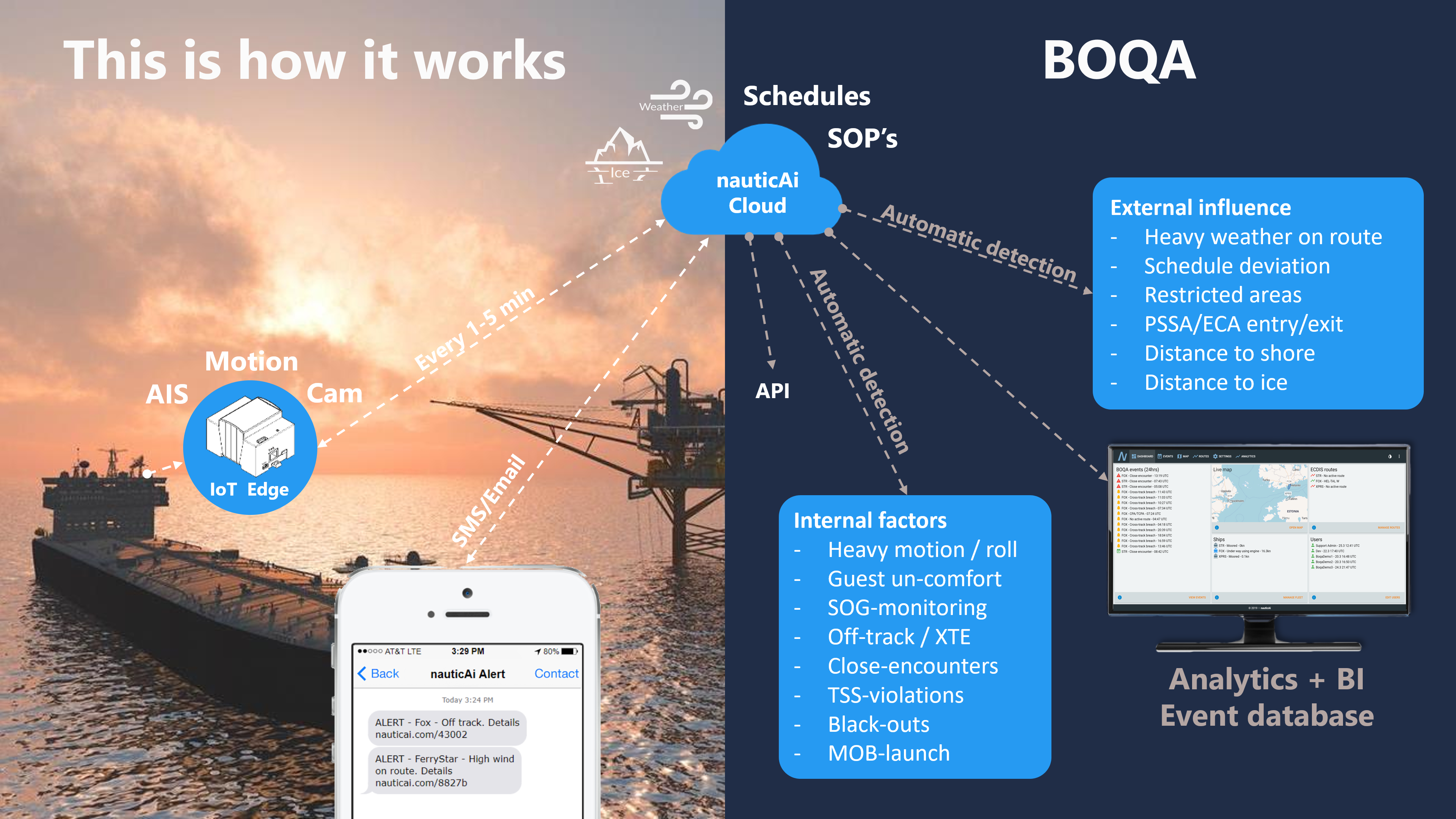AWS Public Sector Blog
Maritime Operations – Automating Operational Quality Assurance with AWS and Open Data
nauticAi is a maritime startup from Finland, specializing in affordable intelligent awareness solutions for ship operators. The company’s BOQA-solution (Bridge Operations Quality Assurance) automates the Operational Quality Assurance of maritime operations with proven methods from the flight industry. A few key components in their solution include open weather data from NOAA and Finnish FMI, Internet of Things (IoT) technology, and a serverless AWS architecture using AWS Lambda and Amazon Aurora.
As part of the Amazon Sustainability Data Initiative, we invited Capt. Henrik Ramm-Schmidt, CEO and founder of nauticAi, to share the story of nauticAi with us.
What challenges in the maritime sector is nauticAi solving?
The maritime industry is perceived to be old fashioned. This is mostly true when it comes to utilising – or rather NOT utilising – real-time data to drive daily operational decisions. Our core mission is to empower our customers with real-time data and awareness of their fleet, ships, weather, and operational quality. We also help our customers to understand the value of the API economy, which means having your various operational systems speak with each other through machine-readable interfaces.
What is nauticAi’s solution?
Our core solution is a real-time cloud platform, which ingests various data sources and detects Operational Quality Assurance events from those data streams, such as close encounters with other ships, unscheduled stops, heavy weather along the route, and excessive motion. Traditionally, this type of work is done manually, on an ad-hoc basis, and is time consuming. Our BOQA-solution uses artificial intelligence (AI) to automate these tasks.

An example of this automation is the use of our IoT-device deployed on vessels to track motion. Our system automatically receives motion data, combines it with ship location and external weather data (from AWS Open Data), and securely feeds the data over an API to the customer’s analytics system. This real-time data stream gives the customer information on how wind and waves affect on-board navigation. Combined with weather forecast data, it enables prediction and optimisation of navigation.

How have you implemented this solution?
It was an easy decision to build our solutions on AWS with auto-scaling serverless Lambda components and Amazon Aurora. We maximise available real-time open datasets through the AWS Open Data Program (NOAA’s Global Forecast System and FMI HIRLAM weather model) and the EU Copernicus (Meteo-France weather data), which keeps our costs low and prices down. The product is a mobile-optimised web-dashboard (delivered through an S3 bucket and Cloudfront) and automatic event alerts that help customers monitor operational quality, respond quickly to any incidents or issues, and improve operations. We also provide APIs to the data stream and event database.
How was AWS key to this?
AWS provides us with the right tools and a mature and scalable cloud infrastructure to grow our business without the need to think about hardware. Serverless technology helps us to reduce our system administration and improves our overall quality and security. We also like the billing management and pricing models, which are clear and easy to monitor.
We had many highlights along our AWS journey, but one of the main ones is our access to the open weather data on S3, which makes it easy for us to use these datasets and reduces storage-related costs. Another benefit of working on AWS is access to the serverless design, which minimises our system administration and maximises scalability.
What was the outcome and what is next for nauticAi?
The key outcome is a scalable and cost-effective cloud platform, which runs reliably and relentlessly monitors our customers’ operations. This enables us to be one of the few commercial companies supplying the maritime industry with this type of automatic Operational Quality Assurance.
Next, we will extend our serverless architecture and incorporate more real-time streaming of analytics the data we use. We are also focusing on a new data source – the large amount of semi-structured email data. This data contains available cargo information, market data, and periodic ship status reports. Our email reader will combine artificial intelligence, machine learning, and natural language processing techniques with a powerful API-structure for easy integration and utilisation in operational and commercial software solutions.